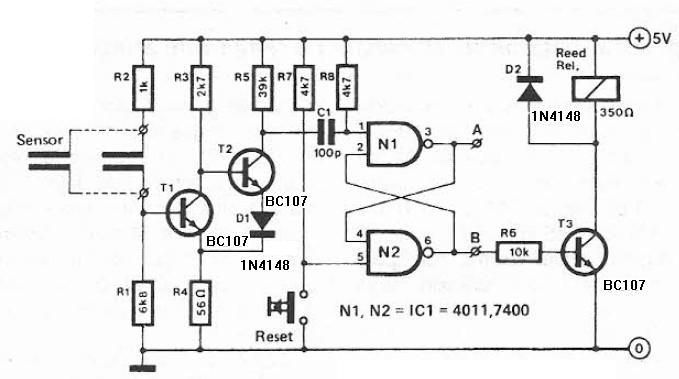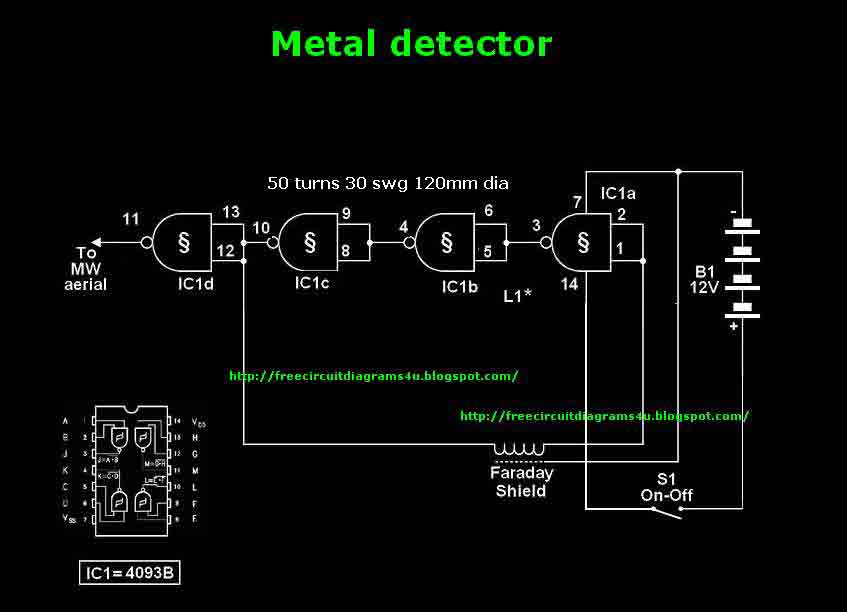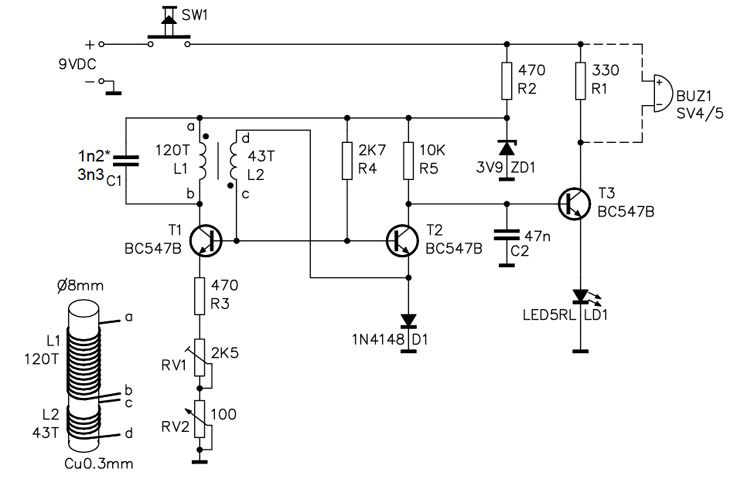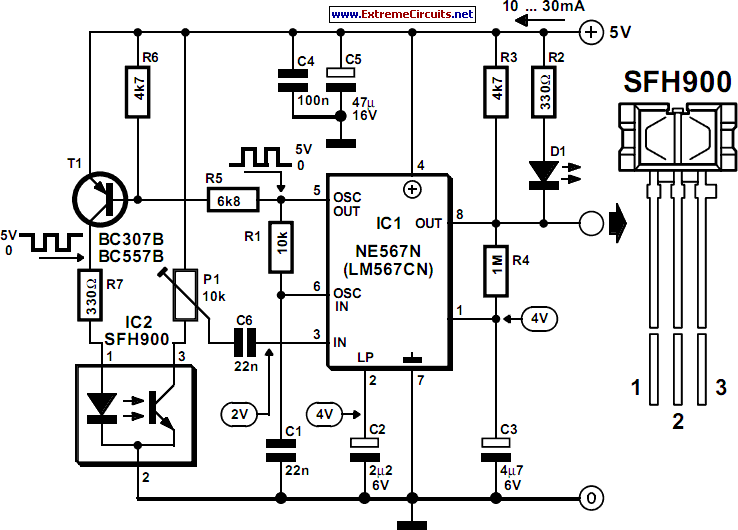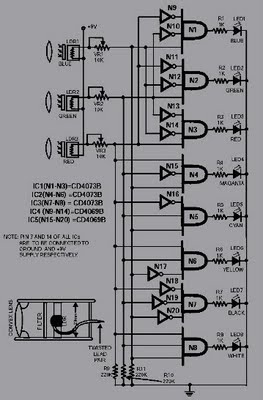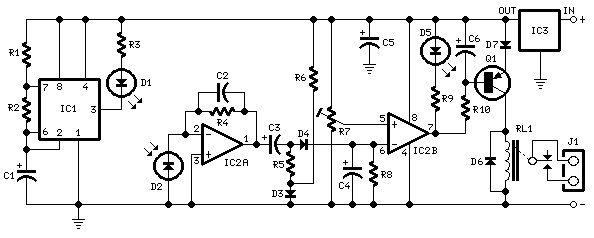
PIR Motion Detector

The presented schematic illustrates the construction of a simple PIR motion detector sensor. PIR sensors are capable of detecting motion and are primarily utilized to determine if a person has entered or exited the sensor's range. These sensors are compact, cost-effective, energy-efficient, user-friendly, and durable. Consequently, they are frequently integrated into various appliances and devices used in residential and commercial settings. They are commonly known as PIR sensors.
The PIR (Passive Infrared) motion detector operates by sensing changes in infrared radiation within its environment. When a warm object, such as a human body, moves across the sensor's field of view, it triggers the sensor to activate. The sensor consists of two pyroelectric elements that detect changes in infrared levels. When a difference in temperature is detected between these elements, the sensor outputs a signal that can be used to activate alarms, lights, or other devices.
The circuit typically includes a PIR sensor module, which contains the pyroelectric elements, a signal processing unit, and an output mechanism. The output can be digital or analog, depending on the design requirements. The digital output can be connected directly to a microcontroller or relay to control other devices, while the analog output can be used for more complex signal processing applications.
Power supply requirements for the PIR motion detector are generally low, allowing for battery operation or integration into existing power systems. The circuit may also incorporate additional components such as resistors, capacitors, and diodes to ensure stable operation and to filter noise from the output signal.
Common applications of PIR sensors include security systems, automatic lighting control, and energy-saving systems in buildings. Their versatility and efficiency make them a popular choice for motion detection in various environments. Proper placement and calibration of the sensor are crucial for optimal performance, ensuring that the detection range aligns with the intended area of coverage.Presented schematic shows how to build simple PIR motion detector sensor. PIR sensors allow you to sense motion, almost always used to detect whether a human has moved in or out of the sensors range. They are small, inexpensive, low-power, easy to use and don`t wear out. For that reason they are commonly found in appliances and gadgets used in homes or businesses. They are often referred to as PIR, . 🔗 External reference
The PIR (Passive Infrared) motion detector operates by sensing changes in infrared radiation within its environment. When a warm object, such as a human body, moves across the sensor's field of view, it triggers the sensor to activate. The sensor consists of two pyroelectric elements that detect changes in infrared levels. When a difference in temperature is detected between these elements, the sensor outputs a signal that can be used to activate alarms, lights, or other devices.
The circuit typically includes a PIR sensor module, which contains the pyroelectric elements, a signal processing unit, and an output mechanism. The output can be digital or analog, depending on the design requirements. The digital output can be connected directly to a microcontroller or relay to control other devices, while the analog output can be used for more complex signal processing applications.
Power supply requirements for the PIR motion detector are generally low, allowing for battery operation or integration into existing power systems. The circuit may also incorporate additional components such as resistors, capacitors, and diodes to ensure stable operation and to filter noise from the output signal.
Common applications of PIR sensors include security systems, automatic lighting control, and energy-saving systems in buildings. Their versatility and efficiency make them a popular choice for motion detection in various environments. Proper placement and calibration of the sensor are crucial for optimal performance, ensuring that the detection range aligns with the intended area of coverage.Presented schematic shows how to build simple PIR motion detector sensor. PIR sensors allow you to sense motion, almost always used to detect whether a human has moved in or out of the sensors range. They are small, inexpensive, low-power, easy to use and don`t wear out. For that reason they are commonly found in appliances and gadgets used in homes or businesses. They are often referred to as PIR, . 🔗 External reference
